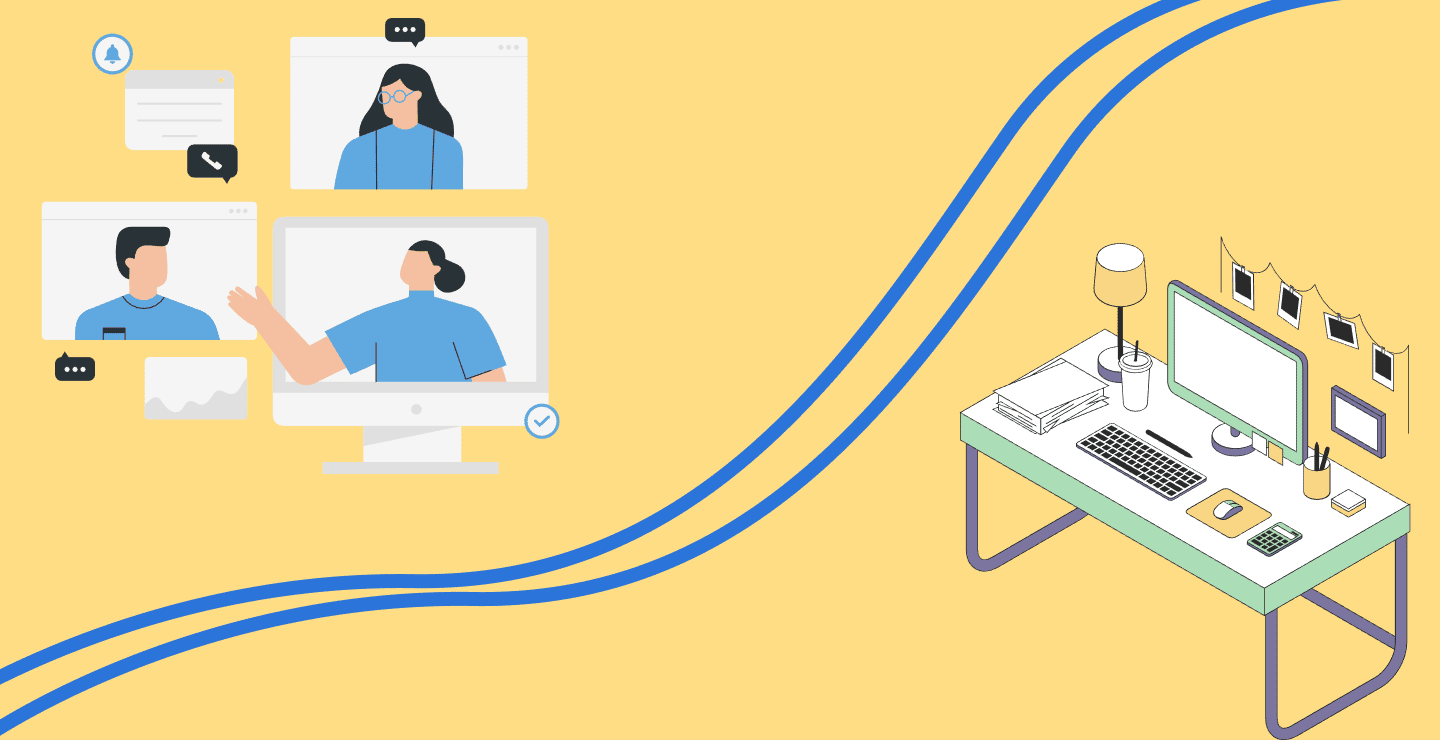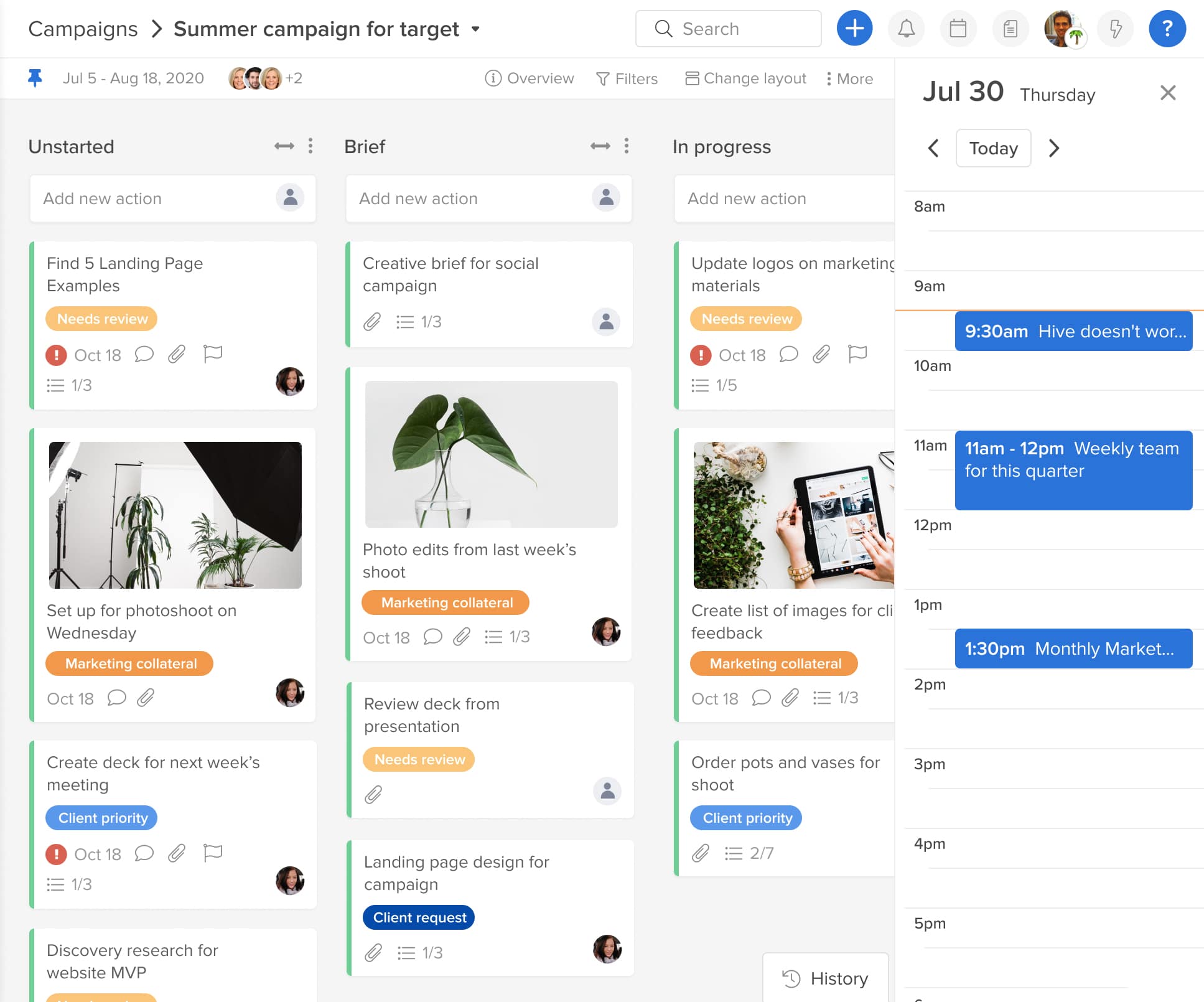
What Does “Hybrid Work” Really Mean?
We’ve rarely had the opportunity to slow down and truly take stock of what it means to work in a hybrid world — how some common views on the workplace have changed, and how the nature of work has shifted in general. So what is this new “hybrid work” model and how can you make it work for you and your team?
What exactly does “hybrid” mean?
To define hybrid work is such a confusing feat because everyone’s hybrid setup is different, and sometimes, it can vary by week. For some companies, “hybrid work” means that people are allowed to go back into the office, but for the most part, no one does, and everyone continues working from home. This also means that all employees are on particular hybrid work schedules, but they’re required to come into the office at least two days per week.
For the most part, hybrid transitions have come down to whether or not employers are picking up what their employees are putting down, so to speak. Workers have made it extraordinarily clear that if they can’t work from home they won’t be working at all, and management is on the opposite side of things, clamoring for a return to work as soon as possible. The compromises formed then manifest in each organization’s variation of “hybrid work,” and going hybrid has almost become a barometer for company culture.
This functions on both macro and micro levels, as one’s firm could demand one thing while their manager demands another, further confusing things. According to the Workgeist Report, up to 52% of employees say that the measurements for tracking their performance are different depending on the department that’s taking those measurements. It’s hard to argue that there’s a unified objective definition of where your company wants to go when you can barely assess where you’re at, and though your company can measure growth, productivity, and sales, it can be difficult to attribute that to any particular facet of the work environment, like the location of your desk.
It’s also important to note that if sales and growth are down, it could be because of the company’s environment, and we all know that there’s nothing worse for workplace morale than forcing employees to do something they all hate, like going back into the office. The ideal definition of hybrid work is supposed to be the integration of all the good parts of work, like collaboration, socialization, and consistency, without all the parts they hate, like fixed hours, fixed uniforms, and hours sitting at a desk in front of a computer like a robot.
But the legitimate and realistic definition of hybrid work is that you go into the office when your boss wants you to (even if they never want you to) for reasons they’ve deemed to be logical.
What counts as “work”?
Much worse than attempting to parse out the definition of “hybrid” is attempting to discern what exactly “work” is. Is it “work” to answer that email you forgot about at 11 PM? Is it “work” to try and locate that client’s email address that’s buried deep within your Slack messages? Is it “work” to message a colleague and gossip about an unproductive meeting? And if all of that does count as work, when do you have time to actually “work”?
It appears that the definition of “actually working” has changed exponentially in the wake of the COVID-19 pandemic, even if nobody’s talking about it. According to the Workgeist Report, 43% of employees report that way too much of their time is spent on switching between the online tools that are supposed to make their lives easier. They pore through messages, project management apps, and CRM tools, looking for data that their co-worker at the cubicle across from yours used to have at their fingertips. Hours are spent out of every day just trying to find the information to do your job through the many apps and folders that were supposed to make your life easier. It appears as if half of doing your job has become finding what you need to do your job – and in the Workgeist Report, seven out of ten people agree that this is a “time-consuming” venture.
The synergy between workers has also suffered during the remote switch, and while you may never have thought of dropping by someone’s cubicle to ask a couple of questions as “work,” it might be the part of your job that you miss the most. Sometimes, it takes days to answer an email where it used to take seconds in person. And if you aren’t using any integration tools, you might need to ask multiple people about the same portion of your project. Due to the breakdown in communications and a silo mentality, many say they have no idea what their coworkers are even working on (other than trying to find the data to do their jobs). This can cause even more issues with getting things done, as it may seem like the many puzzle pieces necessary to meet deadlines are splayed about, and while some sections may be completed, you have no idea which ones they are.
Defining “hybrid work” all by yourself
Now that we’re gotten a sense of what hybrid means and what working means, we can sandwich them together, and figure out where to go from there. It’s been a long and depressing road filled with busy work, miscommunications and misalignment. But don’t worry, hope is not lost if you find yourself entrenched in hybrid work for the next few months.
First, you need to break down what a day in the office would look like for you, and if it would truly cure all of your work woes. Will you have what you need to do your job without taking hours of your day spelunking for information deep within the productivity apps your company uses? Will you be on the same laptop, using the same unintegrated apps, feeling just as flustered as you did at home? Or will you be able to turn to a co-worker and ask for help – that is, if they’re on the same work schedule as you are?
Let’s say your job does open up the office, and tell people that they can come if in they feel so inclined. Don’t take the easy way out, and work from home just because your pajamas are comfortable. This is the perfect time for you to put on your metaphorical scientific lab gear and prepare yourself for an experiment.
Find the three to five people you work with the most, whether they’re on your team or not. People in this category would be those who you message the most, those with who you have the best work relationships or those who provide you the most tech support. Get all these people in a group chat, and plan to all be scheduled on the same day. See how this impacts your workflow, your ability to complete projects and your attitude around communication. Do you feel better after a day at the office, or do you feel like you just did the same things you do at home?
Use this experience to inform your personal hybrid work schedule. If a boss says that you don’t need to come to work, don’t be satisfied with that answer. Figure it out on your own – because if hybrid work means something different to every team, every company and every department, it should mean something different to you as well. Remember: there’s only one way to find out how you can achieve greatness during in-person work, going to the office! You might feel more focused in the office, and it might also be easier to problem-solve, brainstorm, and bond with people from different departments. Bottom-line, the goal is to find balance with your new hybrid setup.
Now, picture this other scenario where most of your company opted to return to the office and you are the only remote worker on your team. You must include yourself in meetings and other activities to reduce feelings of isolation and to participate in important business decisions (especially if you are a woman). When working from home, take advantage of your solo time, create and test out different routines, and make it flexible! But also share your experience and productivity tips with other colleagues. Someone in your team or organization might feel pressured to be at the office just because they don’t know how to ask a manager to work remotely; hearing about your experience can encourage them to take action and change their hybrid work schedule.
Use the right hybrid work tools
The best way to support employees in a hybrid work model is to offer them the right tools to work with their schedule. By understanding that each person works differently, hybrid managers have a better chance to avoid a toxic productivity environment and improve employees’ mental health when they work from home. For example, managers can run a survey asking for peoples’ preferred working-hours.
Another challenge in hybrid work is decision-making. A project can go badly if employees working from home are not considered in the process. Having a transparent way to communicate across departments can improve team accountability. After all, the main goal is to help people to stay motivated and focused at work.
Using Hive For Hybrid Working
Hive is a project management software that facilitates a hybrid work model because of its flexible and customizable nature. The tool can be tailored to fit your hybrid team’s needs and offers features such as Hive Notes that allows throughout documentation of meetings, keeping everyone (in the office or at home) on the same page.

With Hive Mail, you can access your inbox, send new messages, and organize email follow-ups, all without ever leaving Hive — saving people time from switching between the tools. The platform is built with a visual display, has moveable cards and 6 different project layout options. For example, the Calendar view can give you a great sense of who is working from home and who would be in the office each week.
So how can Hive help my hybrid team? Hive has robust project management and collaboration features, including:
- Resourcing and timesheets
- Proofing and approvals
- Hive Forms make it easy to do pool surveys and collect feedback
- Native chat with both direct and group messaging
- Note-taking within Zoom meetings
- Native email
- Features are built by users via the Hive Forum
Start your 14-day free trial and see why thousands of teams choose to work in Hive — regardless what their schedules look like.


